Related Research Articles

The minute black scavenger flies or "dung midges", are a family, Scatopsidae, of nematoceran flies. Despite being distributed throughout the world, they form a small family with only around 250 described species in 27 genera, although many await description and doubtless even more await discovery. These are generally small, sometimes minute, dark flies, generally similar to black flies (Simuliidae), but usually lacking the humped thorax characteristic of that family.

Scutellinia scutellata, commonly known as the eyelash cup, the Molly eye-winker, the scarlet elf cap, the eyelash fungus or the eyelash pixie cup, is a small saprophytic fungus of the genus Scutellinia. It is the type species of Scutellinia, as well as being the most common and widespread. The fruiting bodies are small red cups with distinct long, dark hairs or "eyelashes". These eyelashes are the most distinctive feature and are easily visible with a magnifying glass. The species is common in North America and Europe, and has been recorded on every continent. S. scutellata is found on rotting wood and in other damp habitats, typically growing in small groups, sometimes forming clusters. It is sometimes described as inedible, but its small size means it is not suitable for culinary use. Despite this, it is popular among mushroom hunters due to its unusual "eyelash" hairs, making it memorable and easy to identify.
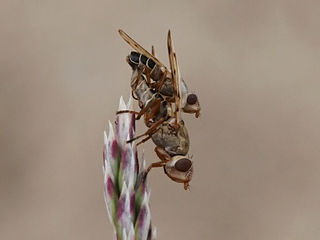
Tetanops myopina is a species of fly in the family Ulidiidae. It is found in the Palearctic.

Apiloscatopse bifilata is a species of fly in the family Scatopsidae. It is found in the Palearctic. Described from specimens in Haliday's collection. The type locality is likely Ireland.
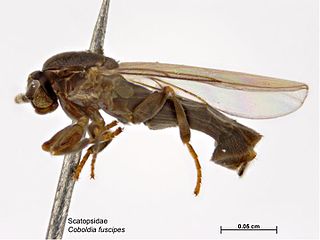
Coboldia fuscipes is a species of fly in the family Scatopsidae. It is found in the Palearctic.
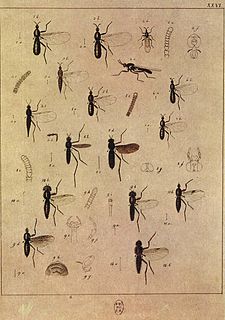
Scatopse notata is a species of fly in the family Scatopsidae. It is found in the Palearctic.

Empis verralli is a species of fly in the family Empididae. It is included in the subgenus Anacrostichus. It is found in the Palearctic.
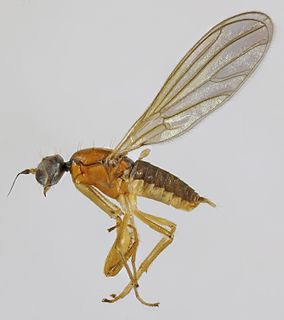
Phyllodromia melanocephala is a species of fly in the family Empididae. It is found in the Palearctic.

Nephrotoma flavescens is a species of fly in the family Tipulidae. It is found in the Palearctic.

Bibio johannis is a species of fly in the family Bibionidae. It is found in the Palearctic.

Bibio varipes is a species of fly in the family Bibionidae. It is found in the Palearctic.
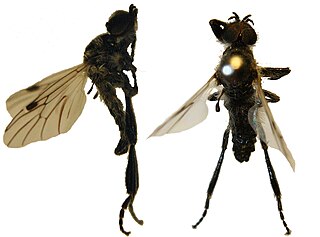
Bibio nigriventris is a species of fly in the family Bibionidae. It is found in the Palearctic.

Bibio longipes is a species of fly in the family Bibionidae. It is found in the Palearctic and the Nearctic.

Bibio leucopterus is a species of fly in the family Bibionidae. It is found in the Palearctic.
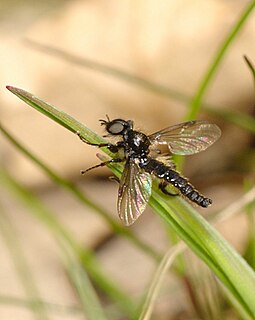
Bibio lanigerus is a species of fly in the family Bibionidae. It is found in the Palearctic.

Renocera stroblii is a species of fly in the family Sciomyzidae. It is found in the Palearctic
Bibio reticulatus is a species of fly in the family Bibionidae. It is found in the Palearctic.
Bibio venosus is a species of fly in the family Bibionidae. It is found in the Palearctic.
Cheilosia longula is a Palearctic hoverfly.
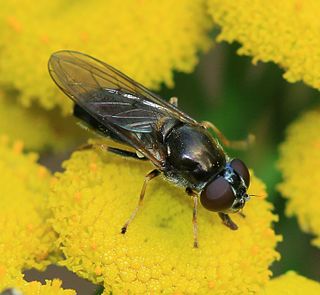
Cheilosia scutellata is a Palearctic hoverfly.
References
- ↑ Fauna Europaea
- ↑ Bei-Bienko, G.Y. & Steyskal, G.C. (1988) Keys to the Insects of the European Part of the USSR, Volume V: Diptera and Siphonaptera, Parts I, II. Amerind Publishing Co., New Delhi. ISBN 81-205-0080-6 ISBN 81-205-0081-4
- ↑ Séguy, E. (1940) Diptères (Nématocères). 367 p., 414 fig. Éditions Faune de France n° 36 Bibliotheque Virtuelle Numerique pdf
